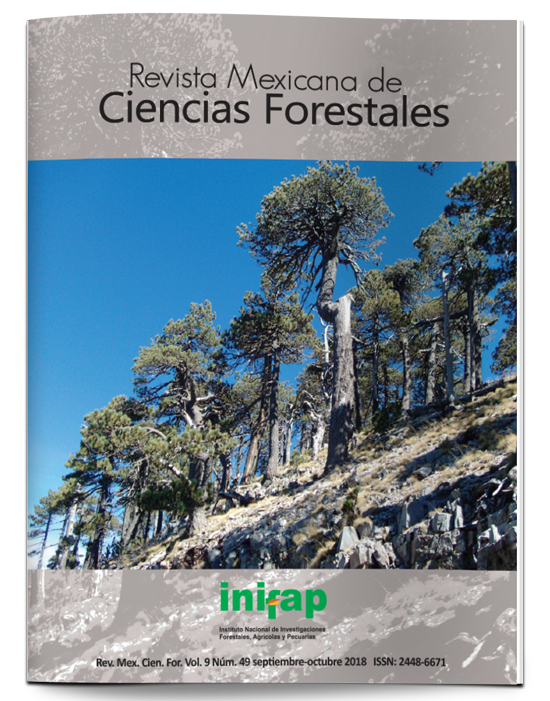Self-thinning and density management in even-aged Pinus patula Schiede ex Schlechtdl. & Cham. stands
DOI:
https://doi.org/10.29298/rmcf.v9i49.162Keywords:
Competition, density management diagram, stand density index, thinning regime, stochastic frontier regression model, ReinekeAbstract
The community of Ixtlán de Juárez, Oaxaca has a significant timber potential due to the high productivity of the forest. One of the most important species is Pinus patula, because of the abundant distribution, high commercial value and rapid growth. Therefore, it is necessary to determine the limits of the possible maximum density that the stands can sustain to lead actions to control competition and growth space. In this study, the maximum density line (self-thinning) was estimated under the Reineke model through two approaches: (1) ordinary least squares (OLS) and (2) stochastic frontier regression (SFR), the last with half-normal and truncated-normal models. A total of 64 permanent sampling plots of 400 m2 in even-aged stands of P. patula were used. The estimate of the upper bound of the self-thinning with SFR approach with half-normal form was more efficient and let to know the maximum density index of even-aged stands. The upper bound of self-thinning line is the primary input for the construction of a stand density management diagram, which is essential tool for the definition of regimes of thinning and growth space optimization.
Downloads
Published
How to Cite
Issue
Section
License
The authors who publish in Revista Mexicana de Ciencias Forestales accept the following conditions:
In accordance with copyright laws, Revista Mexicana de Ciencias Forestales recognizes and respects the authors’ moral right and ownership of property rights which will be transferred to the journal for dissemination in open access.
All the texts published by Revista Mexicana de Ciencias Forestales –with no exception– are distributed under a Creative Commons License Attribution-NonCommercial 4.0 International (CC BY-NC 4.0), which allows third parties to use the publication as long as the work’s authorship and its first publication in this journal are mentioned
The author(s) can enter into independent and additional contractual agreements for the nonexclusive distribution of the version of the article published in Revista Mexicana de Ciencias Forestales (for example, include it into an institutional repository or publish it in a book) as long as it is clearly and explicitly indicated that the work was published for the first time in Revista Mexicana de Ciencias Forestales.
For all the above, the authors shall send the form of Letter-transfer of Property Rights for the first publication duly filled in and signed by the author(s). This form must be sent as a PDF file to: ciencia.forestal2@inifap.gob.mx
This work is licensed under a Creative Commons Attribution-Noncommercial 4.0 International license.






